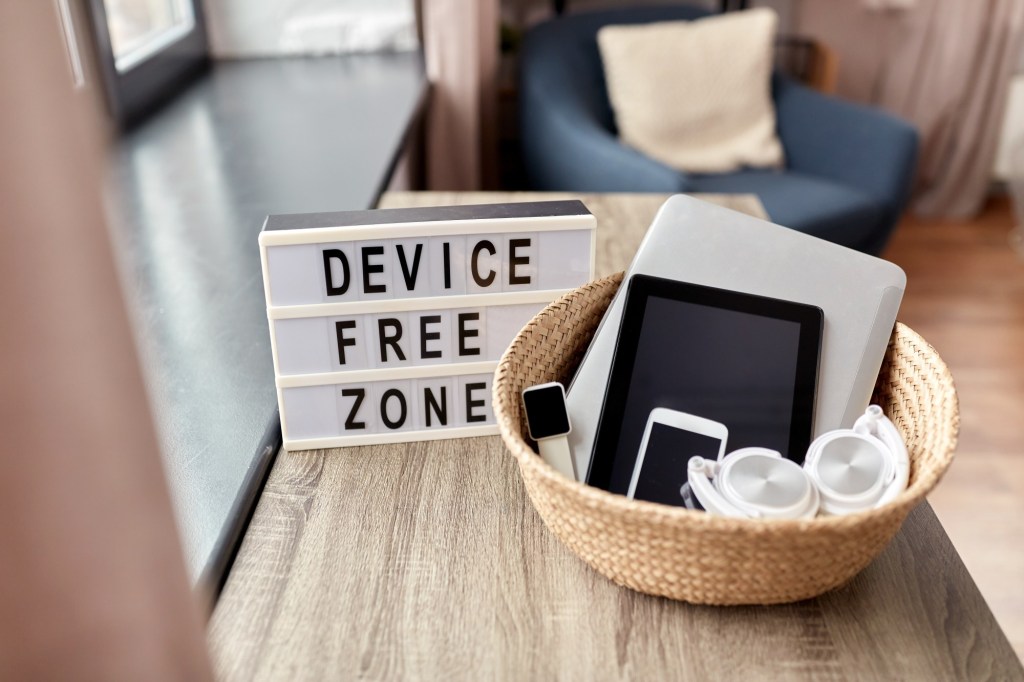

By Amanda Morris
The Washington Post
Many of us have been there: You go on your phone to check a notification or respond to a text, then end up scrolling through social media for the next 30 minutes.
If this sounds like you and you want to be less tied to your phone, consider the “Phone Free February” challenge.
Despite its name, the nonprofit campaign does not actually ask participants to be phone-free (which is not practical for most people). Instead, Jacob Warn, who co-created the campaign run under the Global Solidarity Foundation, said the goal is for people to reduce their overall smartphone usage. The point is “to get you to question what you need your phone for,” Warn said.
Smartphone usage in the United States has exploded over the past decade. The vast majority of Americans own a smartphone. Meanwhile, they are also spending more time online, with roughly a third saying they are “almost constantly” on various devices, including phones.
But, experts said, there’s good reason to try cutting back. Emerging research shows that more screen time is associated with higher rates of obesity, sleep problems and mental health issues. And psychologists are treating an increasing number of people who are addicted to their devices.
The good news is that some of these harmful effects seem to be reversible, said Jennifer Margaret Katzenstein, director of psychology, neuropsychology and social work at Johns Hopkins All Children’s Hospital.
“Reducing your cellphone use by just an hour a day instead of going cold turkey can have a great impact on your quality of life and levels of depression,” she said.
Curbing screen time can be difficult because devices are often designed to be addictive, Katzenstein said. Using a device for activities such as scrolling through social media, texting friends or playing games causes the brain to release dopamine, a neurochemical that makes us feel pleasure. Over time, the brain can build up dopamine tolerance, so we need to use our phones longer to feel the same amount of pleasure. Left unchecked, this pattern can lead to addiction, she said.
If you’re not sure whether you are spending an excessive amount of time on your phone, “go into your settings and look at your average daily screen time,” Warn said.
If that time causes you concern, here are some tips to help you cut back this February.
Make your phone ‘as boring as possible’
Disable push notifications for nonessential apps, or consider deleting them entirely, Warn said. If your phone allows it, change the color filter to grayscale, reduce motion on animations and turn off auto-play for videos. “A lot of it is about how can you make your phone as boring as possible,” he said.
Implement screen-free breaks
Blue light from our phone screens stimulates the production of cortisol, a stress hormone, said Larry Rosen, professor emeritus at California State University at Dominguez Hills and co-author of numerous books on the psychology of technology.
Consistently high levels of cortisol are associated with increased anxiety, sleep problems and a wide variety of chronic health conditions. Paradoxically, the excess cortisol triggered by our phone use can send us into a cycle of stress and anxiety that makes us want to use our phones more, Rosen said.
To break this cycle, take screen breaks, Rosen suggested. Start with a 15-minute break in which you don’t look at your phone, then time yourself using your phone for one minute to check whatever you want. If you’re able to get to the end of 15 minutes without craving your phone, you can keep gradually increasing your screen-free break time until you can go extended periods without thinking about your phone or feeling anxious about checking it.
Once you can tolerate it, try to go screen free one day per week, which can help reset the neurochemicals in your brain and allow you to function better during the rest of the week, said Nicholas Kardaras, an addiction psychologist and clinical assistant professor at Stony Brook Medicine’s School of Social Welfare.
Use ‘dopamine replacement therapy’
But it’s not enough to simply limit screen time, Kardaras said. Solely focusing on cutting back screen time can cause some people to become obsessive and hyper-focus on their phones, he said.
Leaning into healthier pleasurable activities is more effective, he said, because it provides your brain with a replacement for the enjoyment that the phone provided. Kardaras refers to this practice as dopamine replacement therapy.
Having activities prepared ahead of time can redirect your focus from strong urges to use your phone, said Hilarie Cash, chief clinical officer of reStart, a residential treatment facility for people with technology, gaming and social media addictions in Bellevue, Wash. As part of the program, Cash asks her patients to list 100 screen-free activities they enjoy — such as taking a walk outside, reading or doodling. When they have the urge to use their phones, she tells them do one of those activities instead.
It might feel boring at first, but she said this is a sign that your overstimulated brain is going through the process of calming down. “Increasing your tolerance for boredom is a good thing,” she said.
Keep your phone out of the bedroom
Smartphone use close to bedtime can be especially detrimental for sleep, Katzenstein said. Try to remove your phone from your bedroom at least one hour before bed and use an analog alarm clock instead of relying on your phone as an alarm clock.
Practice mindfulness
Mindfulness practices can help us identify the underlying emotions that trigger us to crave our smartphones and then handle those emotions in a healthier way, Cash said.
Try seated meditations or mindful walks in nature (but don’t bring your phone with you).
You can also try being more mindful about your phone use, Rosen said. Before you pick up your phone, decide what you will do and how long you plan to use it for, and don’t multitask.
Reach out to your friends and family
Let friends and family know that you are planning to reduce your online availability, so that you don’t feel as pressured to respond right away, Cash said.
Reaching out to people who can support you in reducing your phone use or who can also participate in the challenge increases your chances of success. Schedule regular check-ins to talk about your progress.
Determine whether you need to take further steps
Over time, maintaining healthier habits with your phone can get easier, Katzenstein said. “It’s about being graceful with yourself and realizing that any small change is an improvement,” she said.
If you find yourself really struggling even after a few weeks of trying to cut back, consider getting a phone with fewer features, such as a Gabb phone or a Wisephone.
Feeling out of control and experiencing significant anxiety or panic attacks when you try to curb your screen time may be a sign of a more serious addiction, Cash said, and you could seek the help of a mental health professional.






